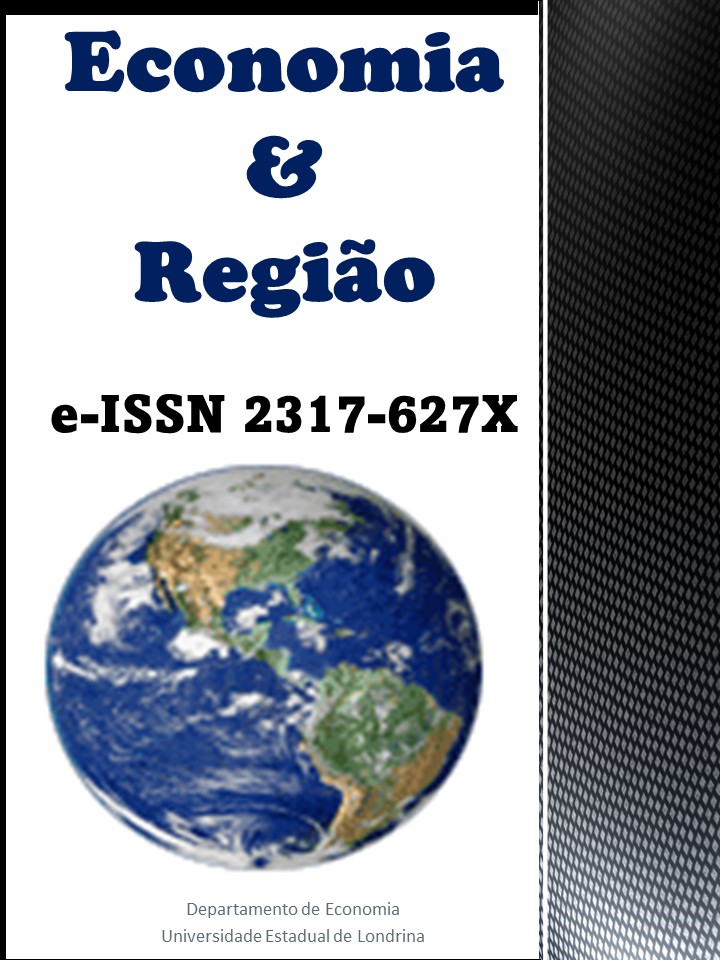Insect-based foods and consumer behavior: what has the scientific literature unveiled?
DOI:
https://doi.org/10.5433/2317-627X.2022v10n1p85Keywords:
Insect consumption, Consumer behavior, Alternative source of protein, Meat substituteAbstract
Issues related to food security have intensified in view of the increase in the world population forecast for 2050 and climate change. In this context, it is observed that companies and scientists have developed new alternative sources of protein, including insects (entomophagy), to meet the increased demand for proteins. Studies have been conducted to better understand the acceptance of these new products, based on insects, by the consumer. This study aimed to demonstrate how the topic related to behavioral changes in the consumption of meat proteinbased diets for entomophagy, has been addressed in the literature. We systematically analyzed 21 articles found in the Web of Science and Scopus databases on the subject. The results show that the consumer is becoming, in a modest way, aware of the impacts of his diet on the environment, but they are not able to substitute meat for food based on insects. It is observed that consumers have been shyly considering introducing these products into the diet. The main barriers to consumption were disgust, appearance and inability to prepare. As an alternative to overcome some barriers, the following stand out: a) the creation of processed products based on insects; b) encourage the dissemination of information on environmental and health benefits and c) promote tasting sessions to avoid prejudice and encourage consumption.Downloads
References
ALVES, M. T. A.; FREIRE, J. E.; BRAGA, P. E. T. O conhecimento local sobre os insetos pelos moradores do município de Groaíras, Ceará. Ensaios e Ciência, v. 19, n.1, p. 7-15, 2015.
ARPPE, T; NIVA, M; JALLINOJA, P. The emergence of the Finnish edible insect arena: The dynamics of an 'Active Obstacle'. Geoforum. v. 108, p. 227-236, January 2020. Doi: https://doi.org/10.1016/j.geoforum.2019.11.005.
BERGER, S; BARTSCH, C; SCHMIDT, C; CHISTANDL, F; WYSS, A. M. When Utilitarian Claims Backfire: Advertising Content and the Uptake of Insects as Food. Frontiers in Nutrition. 2018. Doi: https://doi.org/10.3389/fnut.2018.00088.
BISCONSIN-JUNIOR, A.; JANUARIO, L. A.; NETTO, F. M.; MARIUTTI, L. R. B. Composição de insetos comestíveis. In: CONGRESSO BRASILEIRO DE CIENCIA E TECNOLOGIA DE ALIMENTOS, 36., 2018, Belém-PA, Brasil. Anais [...]. Belém: UFPA, 2018.
CICATIELLO, C; DE ROSA, B; FRANCO, S; LACETERA, N. Consumer approach to insects as food: barriers and potential for consumption in Italy. British Food Journal, v. 118 (9), 2016. Disponível em: https://www.emerald.com/insight/content/doi/10.1108/BFJ-01-2016-0015/full/html. Acesso em: 23 junho 2020.
COSTA-NETO, E. M. Insetos como fontes de alimentos para o homem: Valoração de recursos considerados repugnantes. INCI, Caracas , v. 28, n. 3, p. 136-140, marzo 2003.
COSTA-NETO, E. M. Insetos como recursos alimentares nativos no semi-árido do Estado da Bahia, nordeste do Brasil. Zonas Aridas, n. 8, p.32-39, 2004.
FONTES, V.; SANTOS, C. M. M.; HENRIQUE, V. S. M. Composição e aplicação da formiga Içá na culinária brasileira. Anais do Brazilian Technology Symposium, 2018.
GRASSO, A. C; HUNG, Y; OLTHOF, M. R; VERBEKE, W; BROUWER, I. A. Older Consumers' Readiness to Accept Alternative, More Sustainable Protein Sources in the European Union. Nutrients, v.11 n.8, 2019. Doi: https://doi.org/10.3390/nu11081904.
HARTMANN, C. SIEGRIST, M. Consumer perception and behaviour regarding sustainable protein consumption: a systematic review. Trends in Food Science & Technology. v. 61, 11-25, March 2017. Doi: https://doi.org/10.1016/j.tifs.2016.12.006.
JUNIOR, J. C. L.; FERREIRA, L.C. F.; PEDERIVA, K. A. Desenvolvimento de larvas de Tenebrio molitor L. em diferentes dietas visando a produção de insetos para consumo humano. Revista eletrônica do Univag, n. 18, p. 93-101, 2018.
KUSCH, S. FIEBELKORN, F. Environmental impact judgments of meat, vegetarian, and insect burgers: Unifying the negative footprint illusion and quantity insensitivity. Food Quality and Preference. v. 78, December 2019. Doi: https://doi.org/10.1016/j.foodqual.2019.103731.
LAKEMOND, C. M. M; VELDKAMP, T; VAN HUIS, A. Edible insects: the value chain. Journal of Insects as Food and Feed, v. 5, n. 4, p. 245-246, 2019. Disponível em: https://www.wageningenacademic.com/doi/pdf/10.3920/JIFF2019.x006 . Acesso em: 23 junho 2020.
LIU, AI-JUN; LI, J; GOMEZ, M. I. Factors Influencing Consumption of Edible Insects for Chinese Consumers. Insects, v.11, n. 1, p. 10, 2020. Doi: https://doi.org/10.3390/insects11010010.
LOMBARDI, A; VECCHIO, R; BORRELLO, M. CARACCIOLO, F. CEMBALO, L. Willingness to pay for insect-based food: The role of information and carrier. Doi: https://doi.org/10.1016/j.foodqual.2018.10.001.
LUCCHESE-CHEUNG, T; DE AGUIAR, L. K; SILVA, R. F. F; PEREIRA, M. W. Determinants of the Intention to Consume Edible Insects in Brazil. Journal of Food Products Marketing, v. 26, n. 4, p. 297-316, 2020. Doi: https://doi.org/10.1080/10454446.2020.1766626.
MENOZZI, D; SOGARI, G; VENEZIANI, M; SIMONI, E; MORA, C. Eating novel foods: An application of the Theory of Planned Behaviour to predict the consumption of an insect-based product. Food Quality and Preference, v. 59, p. 27-34, July 2017. Doi: https://doi.org/10.1016/j.foodqual.2017.02.001.
ORKUSZ, A; WOLANSKA, W; HARASYM, J; PIWOWAR, A; KAPELKO, M. At Consumers' Attitudes Facing Entomophagy: Polish Case Perspectives. International Journal of Environmental Research na Public Health, v.11, n. 7, 2020. Doi: https://doi.org/10.3390/ijerph17072427
PALI-SCHÖLL, I; BINDER, R; MOENS, Y; POLESNY, F. MONSÓ, S. Edible Insects -Defining Knowledge Gaps in Biological and Ethical Considerations of Entomophagy. Critical Reviews in Food Science and Nutrition, v. 59, 17, 2019. Doi: https://doi.org/10.1080/10408398.2018.1468731.
PALMIERI, N; FORLEO, M. B. The potential of edible seaweed within the western diet. A segmentation of Italian consumers. International Journal of Gastronomy. Food Science, v. 20, jul. 2020. Doi: https://doi.org/10.1016/j.ijgfs.2020.100202
PAMBO K. O; MBECHE, R. M; OKELLO, J. J; KINYURU, J. N; MOSE, G. N. Consumers' salient beliefs regarding foods from edible insects in Kenya: a qualitative study using concepts from the theory of planned behaviour. African Journal of Food, Agriculture, Nutrition and Development, v. 16, n. 4, 2016. Disponível em: https://www.ajol.info/index.php/ajfand/article/view/149209. Acesso em 23 junho 2020.
SOGARI, G; BOGUEVA, D; MARINOVA, D. Australian Consumers' Response to Insects as Food. Agriculture, v. 9, n. 5, 2019. Doi: https://doi.org/10.3390/agriculture9050108.
TAN H. S. G; VERBAAN, Y. T; STIEGER M. How will better products improve the sensory-liking and willingness to buy insect-based foods? Food Research International, v. 92, 95-105, Feb. 2017. Disponível em: Acesso em: 23 junho 2020. Doi: https://doi.org/10.1016/j.foodres.2016.12.021.
TUNES, S. Insetos comestíveis. Pesquisa Fapesp, v. 21, n. 290, p. 60-67, 2020. Disponível em: https://revistapesquisa.fapesp.br/wp-content/uploads/2020/04/060-067_entomofagia_290.pdf. Acesso em: 17 fev. 2021.
ULYSSÉA, M. A.; HANAZAKI, N.; LOPES, B. C. Percepção e uso dos insetos pelos moradores da comunidadedo Ribeirão da Ilha, Santa Catarina, Brasil. Revista Biotemas, v. 23, n. 3, p. 191-202, 2010.
VAN HUIS, A. Edible insects are the future? Proceedings of the Nutrition Society, v. 75, n. 3, p. 294-305, Aug. 2016. Doi: https://doi.org/10.1017/S0029665116000069.
VAN HUIS, A. Insects as food and feed, a new emerging agricultural sector: a review. Journal of Insects as Food and Feed, v. 6, n. 1, p. 27-44, 2020.
VANHONACKER, F; VAN LOO, E. J; GELLYNCK, X; VERBEKE, W. Flemish consumer attitudes towards more sustainable food choices. Appetite, v. 62, p. 7-16, Mar. 2013. Doi: https://doi.org/10.1016/j.appet.2012.11.003.
VASCONCELOS, G. T. Uso de farinha de insetos na nutrição de peixes. Dissertação. 2019. (Mestrado em Aquicultura) - Universidade Estadual Paulista, Jaboticabal, SP, 2019. 163p.
VERA, C. A utilização de insetos por etnias Guarani de Mato Grosso do Sul, Brasil, como alimento e remédio. In: CONGRESSO ONLINE INTERNACIONAL DE SEMENTES CRIOULAS E AGROBIODIVERSIDADE, 1., Dourados, Mato Grosso do Sul. Cadernos de Agroecologia, v. 15, n. 4, 2020.
VERA, C.; BRAND, A. Aramanday guasu (Rhynchophorus palmarum) como alimento tradicional entre os Guarani Ñandéva na aldeia Pirajuí. TELLUS, v. 12, n. 23, p. 97-126, 2012.
VIDEBÆK, P. N.; GRUNERT, K. G. Disgusting or delicious? Examining attitudinal ambivalence towards entomophagy among Danish consumers. Food Quality and Preference. v. 83, jul. 2020. Doi: https://doi.org/10.1016/j.foodqual.2020.103913
Downloads
Published
How to Cite
Issue
Section
License
Copyright (c) 2021 Economia & Região

This work is licensed under a Creative Commons Attribution 4.0 International License.
Economia & Região adota a Licença Creative Commons Attribution CC-BY 4.0 International, portanto, os direitos autorais relativos aos artigos publicados são do(s) autor(es), que cedem à Revista Economia & Região o direito de exclusividade de primeira publicação.
Sob essa licença é possível: Compartilhar - copiar e redistribuir o material em qualquer suporte ou formato. Adaptar - remixar, transformar, e criar a partir do material, atribuindo o devido crédito e prover um link para a licença e indicar se mudanças foram feitas.




















